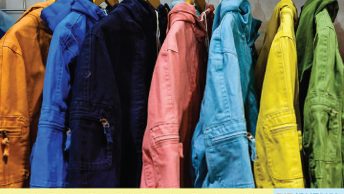Shopping was never so easy till the internet stepped in to offer its services as the chaperone, wheeling the cart behind you, while you shopped tizzy. The reason why online shopping took credence over offline shopping on many counts is also due to its speed and ease of use. It is also on numerous occasions economical and convenient to click and buy. However, by far the best advantage of e-shopping is that the e-shop never sleeps. If you are ready, so is it — to fetch you your command 24x7x365. From an airline ticket, to sending a few sprigs of exotic orchids to your ailing great aunt in Timbuktu, your mouse does all the activity.
But, on the flip side, while it seems to be the best option for the techno-savvy individual who is perennially broke on the question of spare time, it also can be the worst nightmare if caught in the web of deceit woven by unscrupulous dealers whose main motive is to swindle you off your greens.
If you divide the buyers based on gender, age, income, and geographical locations, you will get to see a very different aspect of these online buyers. All these factors actually have a great impact on what they buy, how they spend, and where they frequent. More than 65% of all Internet shoppers can be easily divided into two sections: discount-mongers and shop-with-ease types. A Forrester Research estimated that this 65% included 9.2 million of the 13.1 million households in the U.S. Most surveys however also reveal a difference in men and women shoppers. Men, more techno-savvy and gadget-friendly frequent sites that would offer them the best deals on electronics, entertainment, and home/office supplies. Women on the net would like to visit sites that offer personal products, home and hearth items, and clothes. A demographic study on online shopping trends revealed that geography, apart from age and financial status, too played a key role in the buyers’ tendencies. This might be owing to either its topographical disadvantages or the area’s fiscal potentialities. However, recent surveys have revealed a different storyline altogether. More and more women have loosened their purse strings than their counterparts nationwide. Women buyers made a neat 62 % last year while men conducted only 38% of these transactions.
A portion of why online selling is still gathering momentum to offline shopping is that the traditional bricks-and-mortar stores still holds the trust of the consumer where they get to see, feel, compare and haggle for the product they want to purchase. These notions will change eventually, but only when online services will guarantee hassle-free exchanges to this atypical set of consumers. On the other hand, Internet too has to face similar challenges from the multiple windows that promise the earth to the consumers, with an additional 50% off on the moon if paid via a certain pay channel!!












